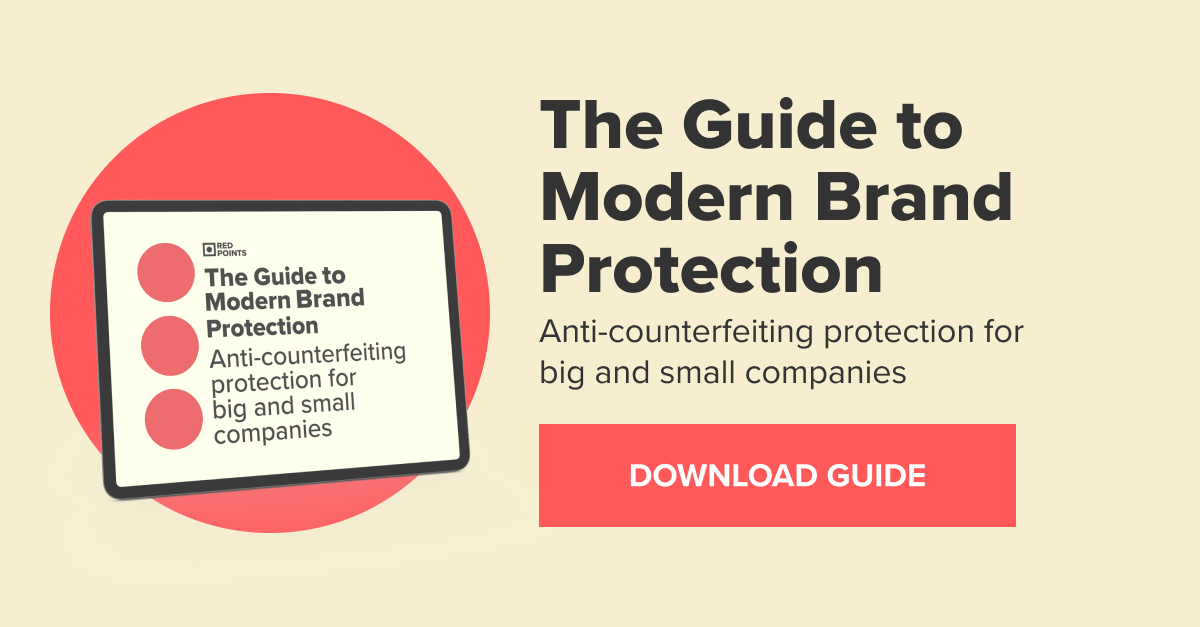
Table of Contents:
Last updated on: June 8, 2022
Red Points examines what qualifies as trade secrets subject matter in the United States, the elements of trade secrets theft under 18 U.S. Code § 1832 and trade secrets misappropriation claim, and affirmative defenses available against said legal actions.
Keeping valuable commercial information as trade secrets is standard practice in industry, which can in certain circumstances be more advantageous than seeking patent protection. Information that qualifies as trade secrets subject matter is diverse. Examples of trade secrets include the KFC trade secret recipe and the Coca Cola formula trade secret, as well as search algorithms utilized by Google and Amazon.
Trade secrets can be kept indefinitely, unlike patents, which expire 20 years from filing, after which anyone can use the patented invention for their profit. Moreover, not all valuable commercial information is patentable. However, the disadvantage of keeping information as a trade secret is that unlike patent owners, owners of trade secrets get no ascertained period of exclusive use. If a competitor independently invents or reverse engineers the same compositions or methods of producing them, then the trade secret owner cannot prevent them from using or marketing said compositions, while a patent owner could sue them for patent infringement and file injunctions to prevent them from making use of their patented inventions during the 20-year period of exclusivity.
Maintaining information as a trade secret also risks that the trade secret information can become public information if adequate measures are not taken to maintain its secrecy. But at the same time, patents can take a long time to issue and can be expensive to obtain and enforce in court. In addition, another advantage of keeping valuable information a trade secret is that, in the United States, theft of trade secrets, unlike patent infringement, is not just a civil cause of action, but also a federal crime with severe criminal penalties if the theft benefits a foreign instrumentality. This article discusses what subject matter can qualify as a trade secret, what constitutes theft of trade secrets under 18 U.S. Code § 1832 or trade secrets misappropriation, and what are the defenses against theft of trade secrets or trade secrets misappropriation.
In the United States, trades secrets are protected both under state and federal law. The Uniform Trade Secrets Act (UTSA), which has now been adopted by all states in the United States with the exception of New York, and 18 USC § 1839(3) describe trade secrets as any information, including a formula, pattern, compilation, program, device, method, technique, or process that derives independent actual or potential economic value from:
To qualify as a trade secret, the owners of such information must treat it as a trade secret by taking reasonable internal and external safeguards to maintain its secrecy. For example, in Rockwell Graphic Systems v. DEV Industries, the disputed information was found not to be a trade secret because the plaintiff failed to take reasonable external safeguards to maintain secrecy by sending out the information to third parties without Non-Disclosure Agreements (NDAs) in place, despite the many internal safeguards the plaintiff took to keep the information a secret among its own employees.
Even though maintaining secrecy is a prerequisite, the secrecy does not have to be absolute. Some reasonable disclosure of trade secrets is allowed even without having NDAs in place when the disclosure is made in the furtherance of important business economic interests, such as during negotiations for sale of the business. It is also important to note that in other countries, such as China, agreements such as Non-Compete, Non-Circumvention, Non-Disclosure (NNN) Agreements may be required instead of standard NDAs to prevent Chinese manufacturers or licensees from using trade secrets without the owners’ authorization.
In the United States, trade secrets misappropriation includes improper use of trade secrets without the owner’s authorization. However, in other countries such as China, trade secrets may not be granted such vast protection. Given that NDAs only prevent Chinese manufacturers or potential licensees from revealing trade secrets but not from using it themselves, broader agreements such as NNNs may be required to protect against trade secrets misappropriation.
In some states, trade secrets include “negative know-how,” such as what drug composition has no therapeutic effect etc. Gaining corporate knowledge of what doesn’t work has economic value as time and resources are valuable to any business. By utilizing this negative know how, that is, by not pursuing unsuccessful strategies, competitors may gain an advantage over corporations that devoted their resources to test and find out what strategies failed. However, in other states, negative know-how does not fall under trade secrets subject matter because they take the narrower view that only information that can be “used” in business has economic value, and because negative know-how is not literally used in business, it is excluded from being trade secrets subject matter.
In New York state, which has not adopted the UTSA, Section 757 of the Restatement of Torts still governs what qualifies as trade secrets subject matter under New York law. In particular, Section 757, comment b lists six factors that a court can weigh and balance in determining whether the disputed information qualifies as a trade secret:
18 U.S. Code § 1832 provides that theft of trade secrets involves “intending or knowing that the offense will benefit any foreign government, foreign instrumentality, or foreign agent,” therefore, whoever:
or attempts to commit any offense described in (1) through (3) or conspires with one or more other persons to commit said offenses would be convicted for theft of trade secrets. A conviction under 18 U.S. Code § 1832 for the federal crime of theft of trade secrets can result in a fine of up to $5,000,000 or three times the value of the stolen trade secrets to the trade secret owner, or imprisonment up to ten years, or both.
The UTSA Section 1(2) defines “misappropriation” as the improper acquisition, disclosure, or use of a trade secret. For the use of a trade secret belonging to another to constitute trade secrets misappropriation, 1) the trade secret information must be acquired through improper means, or 2) the use of trade secret information must involve a breach of trust
Improper means includes theft, bribery, misrepresentation, breach or inducement of a breach of duty to maintain secrecy, or espionage. For example, obtaining trade secrets information about a plant construction by taking aerial photographs of the trade secret owner’s premises were found be “devious” and “commercially wrong” improper means by the court in the Dupont case because they were outside the normal ethical bounds of business.
Breach of trust can be express or implied. An express breach of trust involves breaking an express promise of secrecy or to not disclose. This kind of breach usually involves violating an NDA. Additionally, the trade secret owner can also sue the party violating the NDA for breach of contract. An implied breach of trust involves breach of the duty of loyalty, that is, when the other party had reason to know that the disclosure was intended in confidence, and the trade secrets owner was reasonable in inferring that the other party consented to the obligation of secrecy even in the absence of any such express agreements like NDAs.
For example, in Smith v. Dravo Corp, the court held that the implied trust was breached when the potential buyer started using the blueprints disclosed by the trade secret owner for the limited purpose of securing business from the buyer ,even though the blueprints were disclosed without an express NDA. If parties would like to avoid being sued for implied breach of trust from trade secret owners, they should enter into “disclosure agreements” with the owners that expressly indicate that any information disclosed to them is not a trade secret.
When sued for theft of trade secrets or trade secrets misappropriation, defendants can assert the following affirmative defenses:
In conclusion, there are several advantages to keeping valuable commercial information as trade secrets so long as such information is not generally known in the industry, is not readily ascertainable by proper means, and reasonable precautions are taken to maintain its secrecy both internally and externally.
NDAs and, in the case of Chinese manufacturers, NNNs are important for maintaining secrecy and providing trade secret owners legal causes of action to sue for trade secrets misappropriation.
Trade secrets misappropriation is the improper acquisition, disclosure, or use of a trade secret. The trade secret owner may sue the other party for misappropriation by showing that trade secret information was obtained through improper means or that the other party’s use of trade secret information involved a breach of trust. Additionally, if the trade secrets misappropriation benefits a foreign instrumentality, the other party can be sued under the federal statute 18 U.S. Code § 1832 for the federal crime of theft of trade secrets.
To assert an affirmative defense against trade secrets theft or misappropriation, the defendant has to show that the trade secret information was not acquired through improper means but by either independent invention or reverse engineering.
